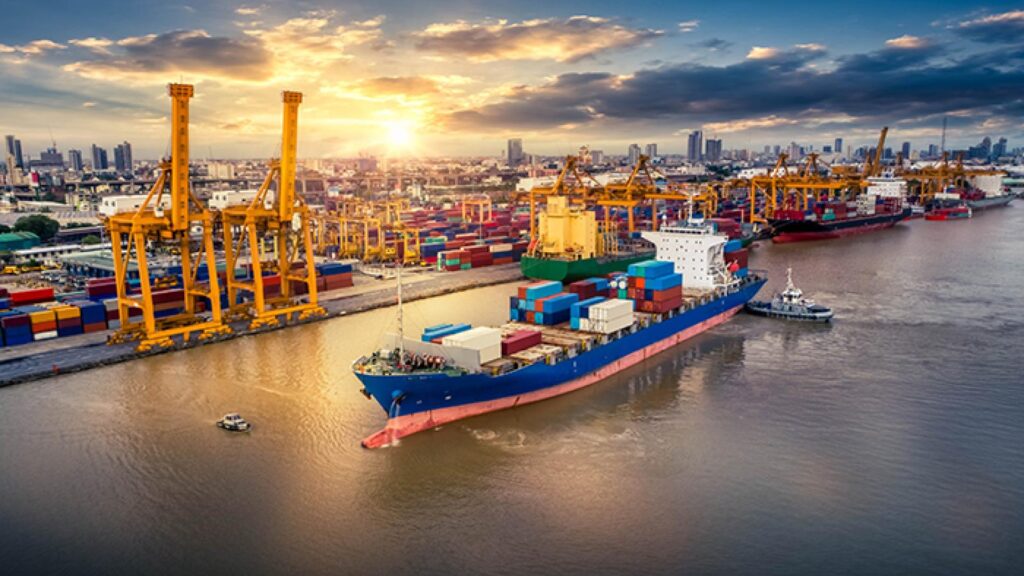
Commercial shipping, a cornerstone of the global economy, is a complex and interconnected system that facilitates the movement of goods and cargo across the world’s oceans and waterways. As vessels of all sizes crisscross the seas, carrying everything from raw materials to consumer products, understanding the intricacies of commercial shipping is crucial. In this article, we will delve into the world of , exploring what it entails and how this vast industry operates.
What is commercial shipping?

refers to the transportation of goods and cargo by sea or inland waterways, primarily for business or commercial purposes. It is a fundamental aspect of international trade and the global economy, facilitating the movement of goods between countries and continents. It encompasses a wide range of activities, including the transportation of raw materials, finished products, consumer goods, and industrial equipment.
How does it work?
Commercial shipping involves several key steps to transport goods efficiently and cost-effectively. Here are the basic steps of how works:
Booking and Cargo Preparation:
- The process begins with a business or shipper booking space on a commercial vessel. They provide details about the type and quantity of cargo, along with the desired destination. Based on this information, the shipping company allocates space on the appropriate vessel. Shippers must also ensure that their cargo is properly packaged, labeled, and documented according to international shipping regulations.
Transportation and Loading:
- Once cargo is ready, it is transport to the designated port or terminal. At the port, the cargo goes through a series of logistics processes, including inspection, customs clearance, and documentation verification. After these formalities, cargo is load onto the ship. Depending on the type of cargo, it may be load into containers, bulk carriers, or other specialized cargo holds on the vessel.
Sea Transportation:
- The loaded vessel then departs from the port and embarks on its journey. During the sea transportation phase, the ship follows a specific route to reach its destination, navigating various bodies of water and potentially stopping at multiple ports along the way. Vessels typically follow predetermined schedules and routes, and the ship’s crew is responsible for its safe operation during the voyage.
Unloading and Delivery:
- Upon reaching the destination port, the cargo is unload from the vessel. The cargo undergoes customs clearance and inspection procedures in the destination country. Once cleared, it is either delivered to the consignee’s location (such as a warehouse or retail store) or transferr to other transportation modes for further distribution, depending on the terms of the shipping contract.
Throughout the entire process, various parties, including shipping companies, port authorities, customs agencies, and logistics providers, play critical roles in ensuring the efficient movement of goods. Effective communication and coordination among these entities are essential to streamline the commercial shipping process and deliver goods to their intended destinations on time and in good condition. Additionally, advances in technology have led to improved tracking and monitoring systems. nhancing the visibility and transparency of cargo movements in the commercial shipping industry.
What is the difference between commercial and regular shipping?

The terms “commercial shipping” and “regular shipping” can be a bit ambiguous, as the distinction between them can vary depending on the context in which they are used. However, generally, the difference between these terms is as follows:
Commercial Shipping:
- It described in a previous response, refers to the transportation of goods and cargo by sea or inland waterways for business or commercial purposes. It is a fundamental aspect of international trade, connecting businesses and markets worldwide. It involves various types of vessels and logistics services and plays a crucial role in the global economy.
Regular Shipping (Non-Commercial Shipping):
- “Regular shipping” typically refers to the shipping of personal items or non-commercial shipments. This often involves sending personal belongings, gifts, or packages for personal use rather than for business purposes. These shipments are not intended for resale or commercial distribution.
In summary, the primary difference between commercial shipping and regular shipping is the purpose and nature of the shipments. Commercial shipping involves the movement of goods for business purposes, such as selling products to consumers or other businesses. Regular shipping, on the other hand, typically involves personal or non-commercial shipments, often for personal use or gifting. The shipping processes and regulations may differ, and commercial shipping may involve more complex logistics and documentation compared to regular shipping.